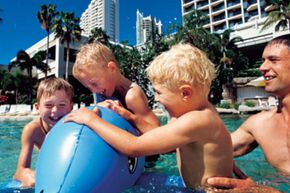Your family pool may seem like a safe haven in the middle of a hectic and complex world, but the fact is, any water feature on your property constitutes a safety hazard, particularly for children and animals. The Virginia Graeme Baker Pool and Spa Safety Act was signed into law on Dec. 19, 2007, to establish minimum standards for pool safety, including the installation and retrofitting of commercial and private pool and spa drain covers. The law addresses the number of drowning deaths that occurred annually prior to its implementation as a result of underwater entrapment in or around submerged drains, including that of the granddaughter of former Secretary of State, James Baker III, for whom the law is named [source: PoolSafety.gov].
The United States Consumer Product Safety Commission (CPSC) as well as the Attorneys General for each state are empowered to enforce and monitor compliance with the swimming pool safety act, work in concert to address concerns about pool safety, and educate the public about safe pool maintenance practices. The program is funded by federal grants provided to participating states.
Advertisement
The pool safety and swimming safety standards mentioned here are specific to federally mandated minimums, but your state may have more stringent or additional rules in place. If you own a pool or spa, use a public pool or spa facilities, or are considering a pool purchase, familiarize yourself with the Virginia Graeme Baker Pool and Spa Safety Act as well as the pool safety rules and regulations for your state and municipality.
Advertisement

